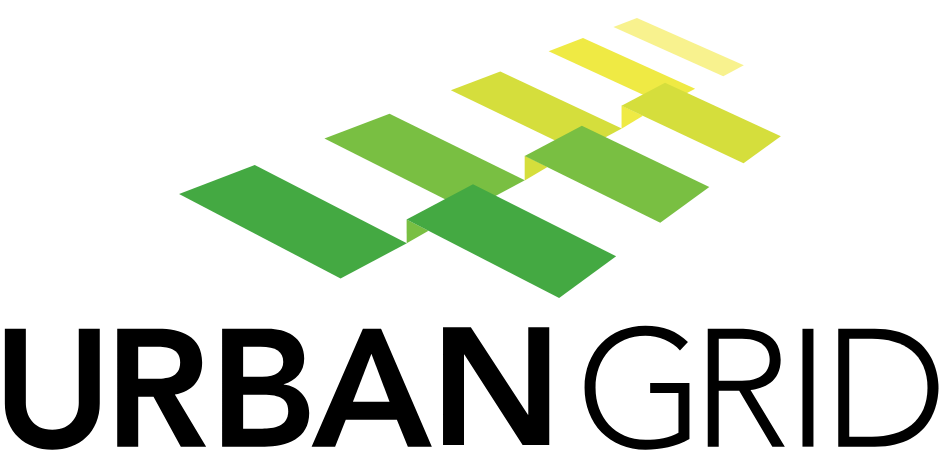> Community Members
ALL SOLAR DEVELOPMENT IS LOCAL
We have been dedicated to creating quality renewable energy projects for over a decade and have experience successfully developing more than 11GW of solar. Our work delivering clean, renewable energy to the power grid wouldn’t be possible if the people who live near our projects weren’t supportive. Above all, we strive to be good neighbors.
Our Investment in Your Community
At Urban Grid, we pride ourselves on standing shoulder-to-shoulder with the community as our projects move from permitting to production. Our landowners are your neighbors and they partner with us because of our integrity, transparency and ability to deliver as we said we would.
Your community benefits from our investment in the solar project through job creation and sustained tax revenue in addition to creating a cleaner environment. A solar project in your area means renewable, clean energy is being added to the power grid which reduces the impact of carbon emissions emitted by energy derived from fossil fuels.
How you can get involved in bringing renewable energy to your community.
- If you’re a landowner, complete the form below to inquire about development opportunities.
- Bring your voice to community meetings where county officials hear about projects and vote on permitting them.
- Follow state and local policy initiatives and encourage your representatives to vote for legislation that increases renewable energy targets.
- Engage with your network on social media and advocate for renewable energy by sharing local news, county hearing dates and policies that impact your area.
Frequently Asked Questions
Solar energy is a clean, renewable, and reliable source of power. Solar is now one of the lowest cost energy resources in most areas of the country because of its falling installation costs and improved efficiency. In the past decade, solar power has moved from a niche, green product to a competitive power generation resource. Not only is solar low cost power, it is also clean and renewable, creates significant new jobs, and supports US energy independence. From 2019 on, more renewable power plants have come online than any other generation resource, including natural gas.
Solar-powered photovoltaic (PV) panels convert the sun’s rays into electricity by exciting electrons in silicon cells using the photons of light from the sun. When photons hit a solar cell, they knock electrons loose from their atoms. If conductors are attached to the positive and negative sides of a cell, it forms an electrical circuit. When electrons flow through such a circuit, they generate electricity. Multiple cells make up a solar panel, and multiple panels (modules) can be wired together to form a solar array. The more panels you can deploy, the more energy you can expect to generate.
Photovoltaic (PV) solar panels are made up of multiple solar cells connected in series. Most solar cells are made of silicon, like semiconductors. Silicon is the second-most abundant element on the planet, after oxygen. About 25 percent of the Earth’s crust is silicon. In solid form, it is an inert, non-toxic element. The rest of the solar panel consists of a sheet of tempered glass on the top of the solar cells and an aluminum frame which encapsulates the panel.
PV solar panels generate direct current (DC) electricity, which means the electrons flow in one direction around a circuit. This is the type of electricity used by batteries and portable electronics, like your phone and laptop. The power flowing from your electrical socket is AC (alternating current) electricity, where the electrons are pushed and pulled, periodically reversing direction. The US electric grid operates at 60 hertz, which means that it switches direction 60 times a second.
Traditional power plants generate AC power by spinning a turbine which interacts with a magnet to produce AC current. Solar panels, however, produce DC current which then needs to be converted to the AC current for our power grid. How do we get DC electricity into the AC grid? We use an inverter.
A solar inverter takes the DC electricity from the solar array and transforms it into AC electricity. The DC current is fed into a transformer with multiple windings. The magnetic field created by the core of the transform switches from winding to winding transforming the DC to AC current. Along with converting DC to AC power, inverters also serve as “the brains” of the PV array, providing critical safety protections, system monitoring and controls for the solar farm.
A utility scale solar farm refers to a larger solar array that generates electricity and feeds the power directly into the transmission grid to supply utilities and other wholesale power customers. While the definition of utility scale may vary, it is usually greater than 25MWac or approximately 200 acres. Urban Grid’s utility scale solar farms typically range from 75MWac to 250MWac. As the solar industry has matured, the size of solar farms has gotten larger.
Solar panels have been in commercial use for more than half a century and the long term operations and safety of solar panels is well established. Most solar panels are based on silicon cells or silicon technology. In solid form, silicon is non-toxic and won’t harm humans or animals. It is also inert – it doesn’t mix with water or vaporize into the air which means that it can’t leak into the ground or air.
Solar panels are manufactured to endure all weather conditions and are regularly installed in extreme conditions from hot deserts to Arctic conditions. The glass face of the panels are made of tempered glass and have to pass rigorous hail tests. The panels themselves are fully encapsulated and sealed shut to ensure both the long life of the panel as well as public safety, as with all electrical equipment.
All solar panels are required to pass the Environmental Protection Agency’s Toxic Leaching Characteristic Procedure (TCLP) test, meaning that these panels are nonhazardous.
The solar inverters include transformers and, like most electrical transformers, they include a liquid cooling oil. In the case of solar inverters, the cooling fluid used is either a nontoxic mineral oil or a biodegradable non-toxic vegetable oil.
No. Solar panels themselves produce no noise while in use. The electrical inverters, used to convert energy from direct current (DC) to alternating current (AC), emit a low hum at about 65 decibels,1 comparable to the sound of an air conditioning unit. 2 3 Standing at the project fence line, you will not be able to hear the inverters. And, with solar, we can also guarantee that the inverters will never run at night. Many projects also have single axis trackers that rotate the panels to follow the arc of the sun. These trackers move incredibly slowly and are virtually silent – they do not create any audible noise.
1 Questions and Answers: Ground-Mounted Solar Photovoltaic Systems.
Massachusetts Department of Energy
2 Solar Inverter Decibel Levels: Do Solar Farms Make Noise? Solar Choice.
3 Outdoor Noise and the Metropolitan Environment, M.C. Branch et al.,
Department of City Planning, City of Los Angeles
No. Solar panels are designed to absorb and absorb sunlight, not reflect it. Most panels use special anti-reflective coating, suppressing reflection to approximately 2% of incoming Sunlight.1 Solar arrays are less reflective than windows or still water and will not negatively impact air traffic or homeowners.2 There have been numerous studies by the FAA as well as the Department of Defense which shown that there is no appreciable glare from the solar panels and that solar panel glare poses no hazard to car or air travel. In fact, many solar farms have been installed near airports and US Military bases.
1 Questions and Answers: Ground-Mounted Solar Photovoltaic Systems.
Massachusetts Department of Energy Resources Resources.
2 IBID
A solar farm is designed to operate for 35 years or more. At the end of its useful life, the solar plant operator will decommission the solar array and return the land to its original state. Our standard leases include a contractual obligation to maintain the solar system and remove the solar farm at the end of the lease or lifetime of the plant. If the project’s ownership should change during the term of the lease, the new owners assume the same contractual obligations of maintenance and removal. Additionally, many communities now set specific decommissioning and financial standards to ensure the successful removal of a project after it ceases operation.
While the solar plant operator is required to decommission the solar farm, it also makes good business sense to do so as the scrap material from a solar array, the aluminum, steel and copper, has significant value and will offset the cost of the equipment removal.
Solar farms have minimal long term impact on agricultural land, unlike other types of development which most often permanently transform farmland to non-agricultural uses. In 2017, when North Carolina was the second largest solar market behind California, the North Carolina Agriculture Department and the NC Sustainable Energy Association explored the issue of utility scale solar’s impact on agricultural land. The study found that, in the preceding decade, only 0.19% of cropland had been repurposed from agriculture for solar. During this period, there was 1,000,000 acre loss of cropland in the state from development and housing, and solar only made up 1% of that total.
A solar installation will only take the agricultural land out of use for the term of the lease or the operational life of the solar farm. Once the solar farm is decommissioned, the land is returned to its original state, and then can either be to farming or another alternate use.
Solar leases can also help diversify the farm income, helping the farming enterprise manage through the ups and downs of the farming economy.
On a community level, solar provides long term investment in agricultural communities through the property taxes which support their way of life. Unlike much development, a solar farm will pay property taxes but doesn’t burden the local government with increased requirements on water, road, and school services.
Does this interest you?
Are you a voice for renewable energy in your community? A landowner? Let us know how we can be a good neighbor.
OUR PARTNERS
Landowners
Elected Officials
Community Members
Utility Planners
Business Leaders
Policy Makers

